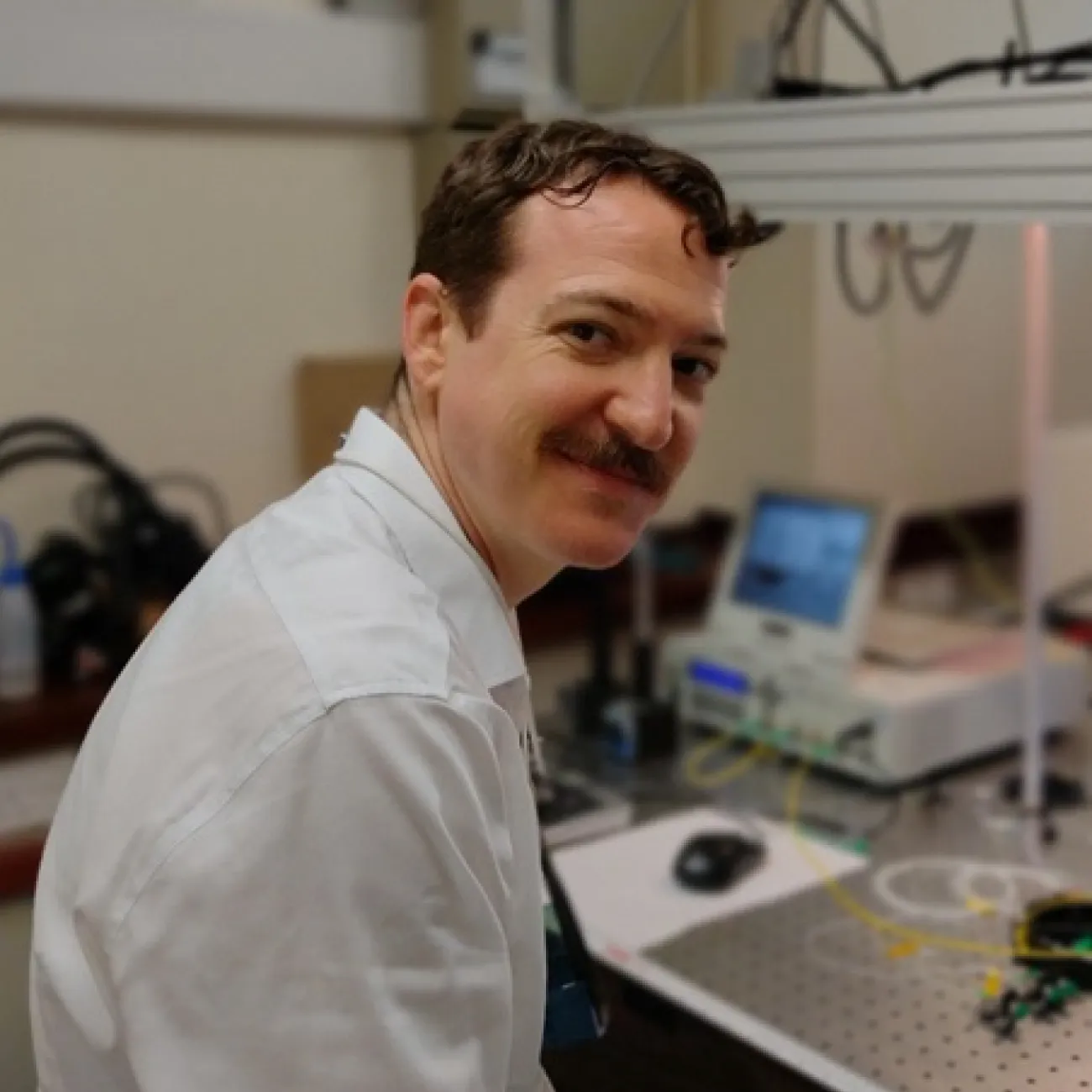About
Austin Taranta is a researcher and enterprise leader in the Hollow Core Fibres Group. Austin received a BSc in Chemical Engineering from the Massachusetts Institute of Technology in 2006 and a PhD in Optoelectronics from the University of Southampton in 2024. Before joining the ORC, Austin was a Senior Optical Engineer in Honeywell Aerospace’s Strategic Sensors Group. There he focused on the design and manufacture of high-performance fibre-optic gyroscopes for defence and space applications. Since joining the ORC in 2016, Austin has driven developments in several research areas, including fundamental investigations in fibre guidance properties, and application-driven research in emerging optical fibre sensors. His current research investigates polarization properties of hollow core antiresonant fibres, physics and chemistry of hollow fibres used in sensing, and development of novel sensors enabled by the unique performance characteristics of antiresonant fibres. In his time at the ORC, he has been responsible for a multitude of research awards and he serves as programme manager for key industrial partnerships. He holds several patents and has authored or co-authored more than 50 peer-reviewed publications.
